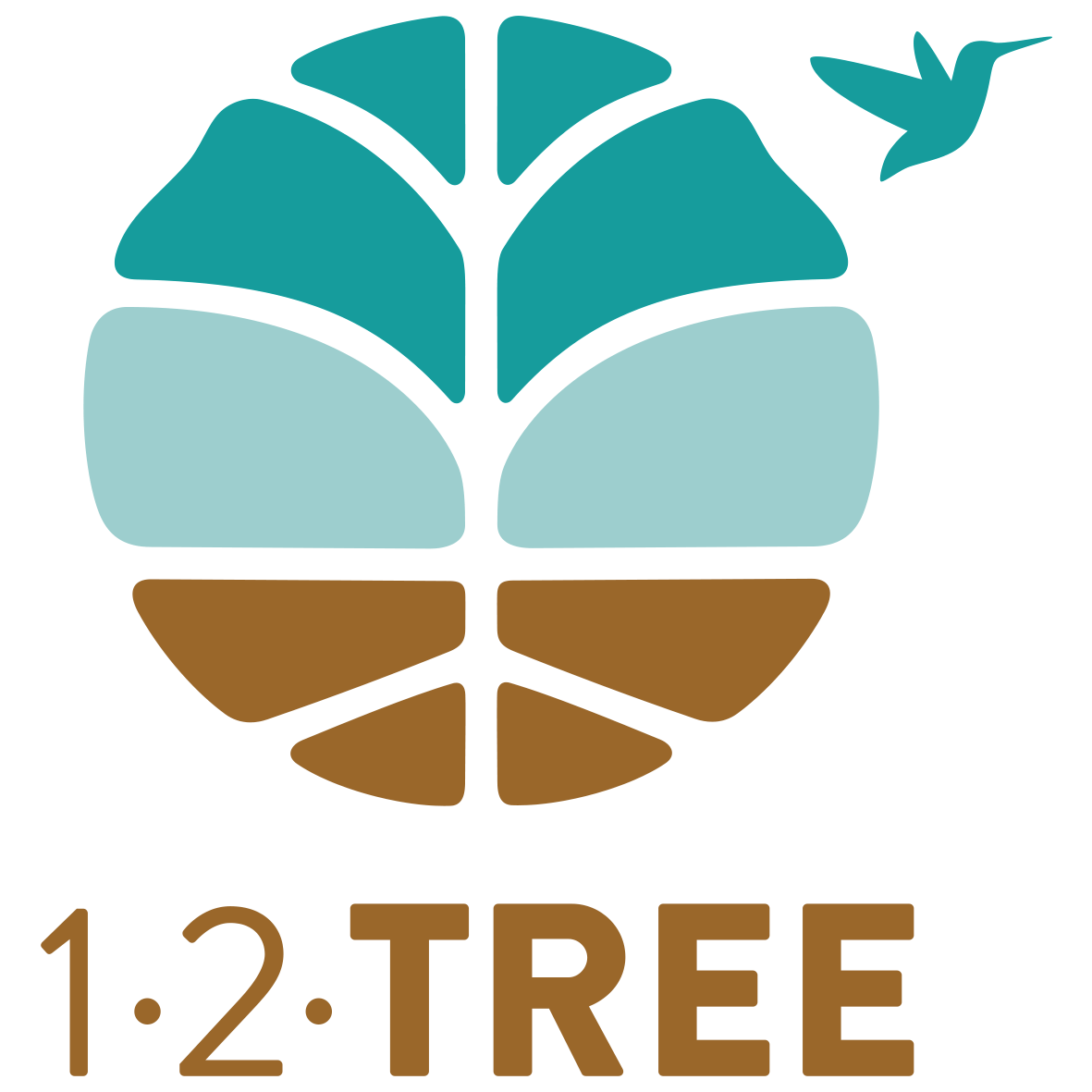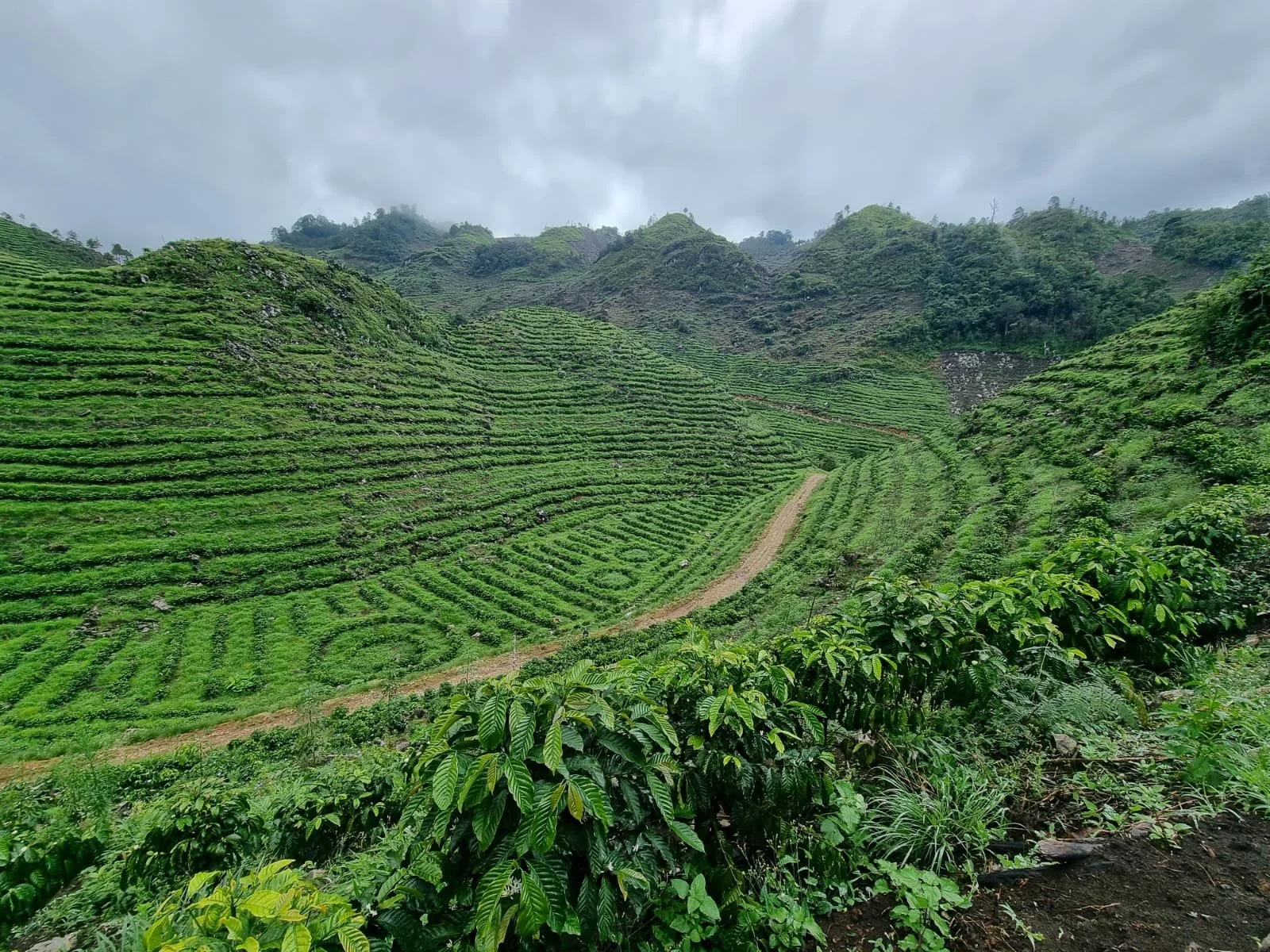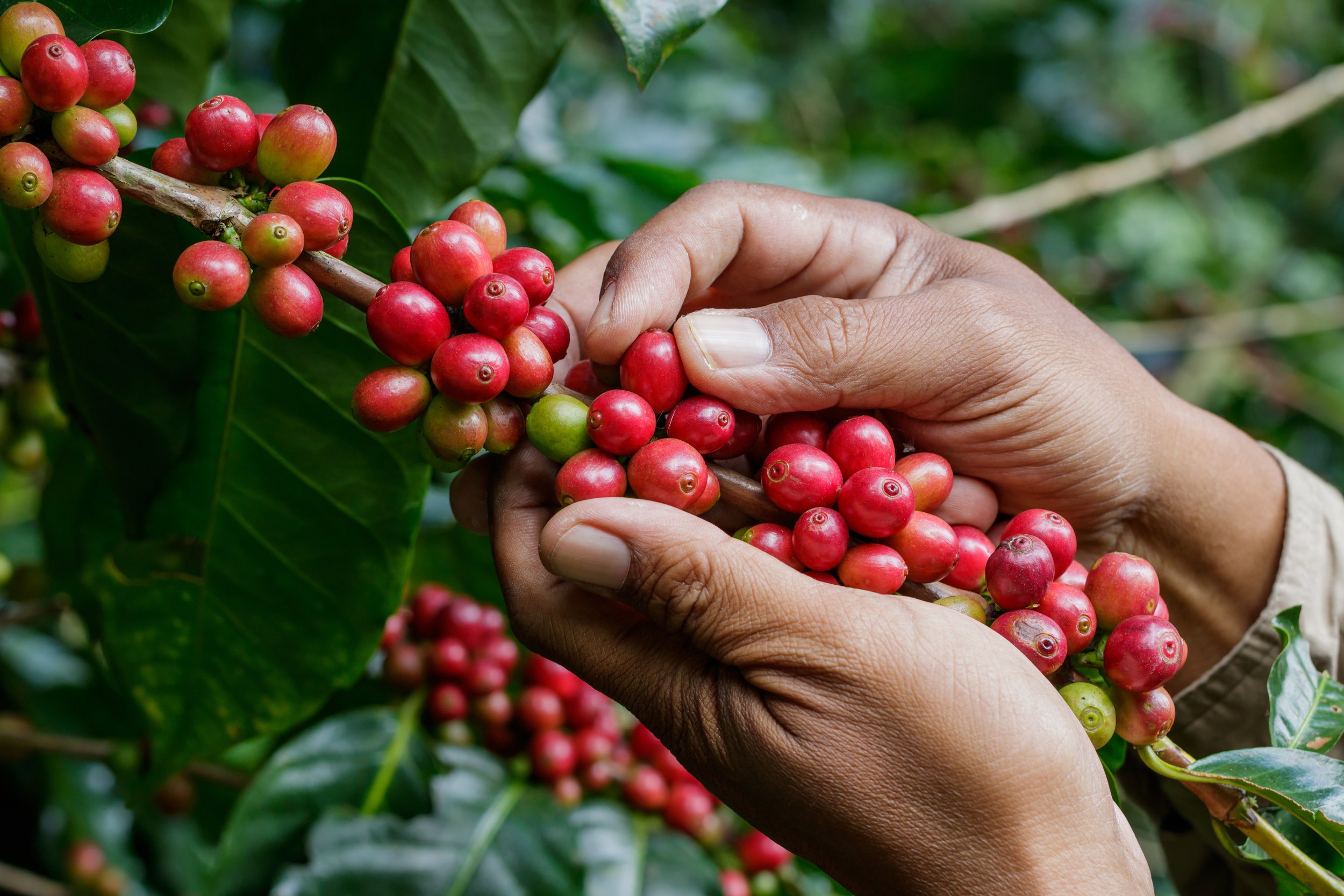Carlos Torrebiarte is the director of operations at Chimelb Farm in Guatemala. He has more than 20 years of experience in coffee cultivation and regenerative agriculture. Together with his team of about 174 permanent employees, he grows four different cash crops in intercropping systems on 1,738 hectares.
How is coffee cultivated on the Chimelb farm?
We cultivate Arabica coffee on a round 580 hectares of Chimelb farm. Chimelb, with its vast landscape of rolling hills, has a variety of microclimates in a relatively small area because of the constant changes in elevation. The Arabica coffee is grown at the farm’s highest elevations, on the top of these hills, surrounded by areas of natural and commercial forests. These higher altitudes provide the conditions necessary to accentuate the natural flavors of different arabica coffee varieties, improving their cupping quality. The coffee is grown under direct sunlight to increase its metabolism and productive potential, using grass cover crops to prevent erosion and improve physical, as well as microbiological qualities of the soil. The natural and commercial forests that we protect and manage, and that stretch across the coffee plantation, act as natural barriers against pests and preserve the biodiversity unique to the region. Producing coffee is a long-term commitment that requires a lot of hard work and determination. Unlike annual crops that are planted and harvested in the same year, coffee is a perennial crop with an expected life cycle of around 20 years. It has a long investment phase, as three years of careful management of young plantings must pass before a coffee plant is ready to produce its first important harvest. Five years after establishment, a coffee plant reaches its productive potential, and throughout the rest of its life, it is managed to produce in on and off cycles according to its natural biannual production cycle or through management practices such as pruning. In Chimelb, as is the case in most Guatemalan coffee farms, the coffee is harvested manually. Hundreds of collaborators from neighboring communities such as Cojaj and Campur are hired during the harvest season bringing much needed economic development opportunities for the region. Unlike perhaps all farms in the region, in Chimelb both ripe and green cherries are harvested together to simplify the task for the collaborators, allowing them to be more efficient.
So, after harvesting the coffee beans, what do you do with them?
All the field work is just the start of all the processes that must be completed so that a cup of coffee is ready to drink. There are different ways to complete this process but for Chimelb, after harvest, the next step in the process is the cherry coffee transformation in the wet mill. The wet mill gets its name from the fact that is uses water in one of the steps in the process to produce what is known as washed coffee[1].
Washed coffee only makes up approximately 50% of all coffee produced worldwide, but the great majority of the premium quality specialty coffee is washed. The wet milling process is a science as well as an art, with many factors such as time, drying temperature, and even anaerobic fermentation processes that must be considered to produce the best coffee possible. For Chimelb coffee, the process starts by sorting the ripe and green cherries by color and density. This results in three different channels where the coffee is processed, since the different colors and densities produce differing qualities of coffee. The ripe and dense cherries are transported to a depulper, where the pulp or skin of the cherry is removed to produce a wet parchment coffee. This wet parchment contains mucilage - or sugar compounds - in the outer layer of the seed, that go through a fermentation process that help the coffee achieve a better and more uniform flavor profile. Once it is ready, this wet parchment is washed to remove the mucilage, and transported to “guardiolas”, or rotary driers, so that it is dried into dry parchment. This dry parchment goes though one final preparation process, called dehusking, in the “dry mill”, and is then ready for export, roasting, and consumption. The green and lower density cherries go through a different process, known as a natural preparation. Unlike washed coffee, this type of coffee is dried without removing the outer skin. Therefore, its mucilage is not removed through the washing process. This process has to take place for the green and lower density cherries since the composition of the skin of these kinds of coffee makes it harder for it to be removed. Still, the quality of naturally processed coffee can be just as good as washed ones. One aspect of the wet milling process for Chimelb coffee that we are very proud of is that it uses much lower quantities of water compared to the industry standard. All the by-products from the process, such as the removed skin, are also further processed and can be used throughout the farm as fertilizer.
What are currently the main challenges for coffee production at your farm?
One of the main agronomical challenges we currently face is the increasing pressure from pest and diseases. Diseases like leaf rust have continuously intensified and become harder to combat through the years. In Chimelb, we are tackling these issues through the regenerative management practices used in the farm, such as the forestry buffer zones used in the system or intercropping with grass cover crops or other cash crop in the case of Robusta coffee. These practices lead to a more diverse plantation that more easily combats the spread of pest and diseases. Another important challenge is the increase in the amount and intensity of rainfalls, which can be especially risky in mountainous landscapes such as those found in Chimelb. Regenerative growing practices, such as the grass cover crop, are once again our most important tools to prevent the problems, such as soil erosion and nutrient runoff, that could result from excessive rainfalls if the ground was left uncovered. Despite these important challenges, I believe that the biggest challenge that coffee currently faces lies on the economic side of the industry. Coffee prices have remained stagnant throughout the last decades, while the capital necessary to invest and manage a farm keeps increasing. Crop diversification, regenerative practices and certifications such as Rainforest Alliance are all tools that we use in Chimelb to address this challenge. However, all these are very capital-intensive processes, especially in the short term. As a result, many coffee farmers in Guatemala and throughout the world, have had no choice but to abandon their way of life, as younger generations no longer want to be involved in a business that promises few returns despite the tremendous work that is involved in it. Coffee has a tremendous potential to be an engine for economic and social development in coffee producing countries, but as long as the price situation does not improve, I see it very hard for producers to implement all the management practices necessary to be sustainable.
[1] DEFINITION: “Washed coffee” refers to coffee that is dried after removing its outer skin, and “washing” off its mucilage
This article is an extract of the 2022 12Tree Sustainability Report



